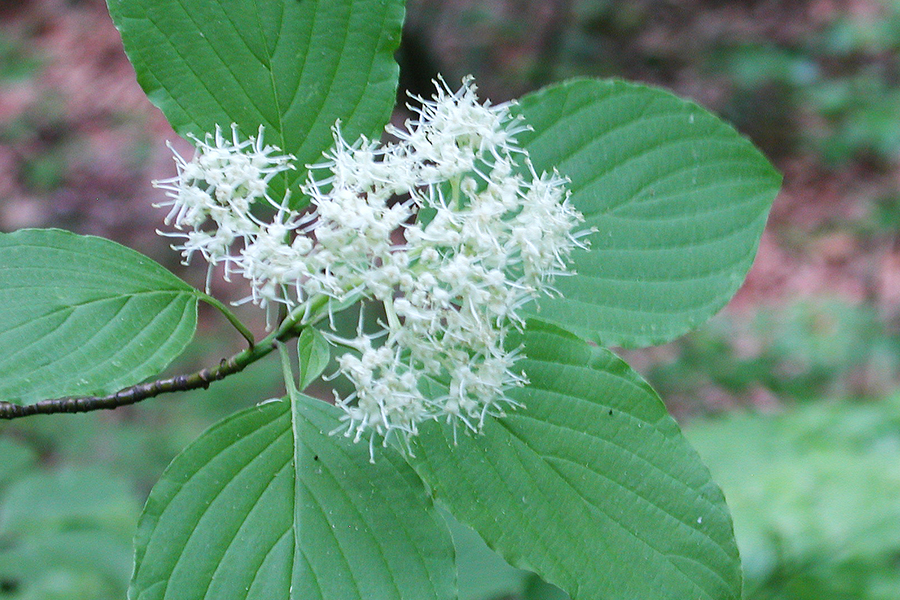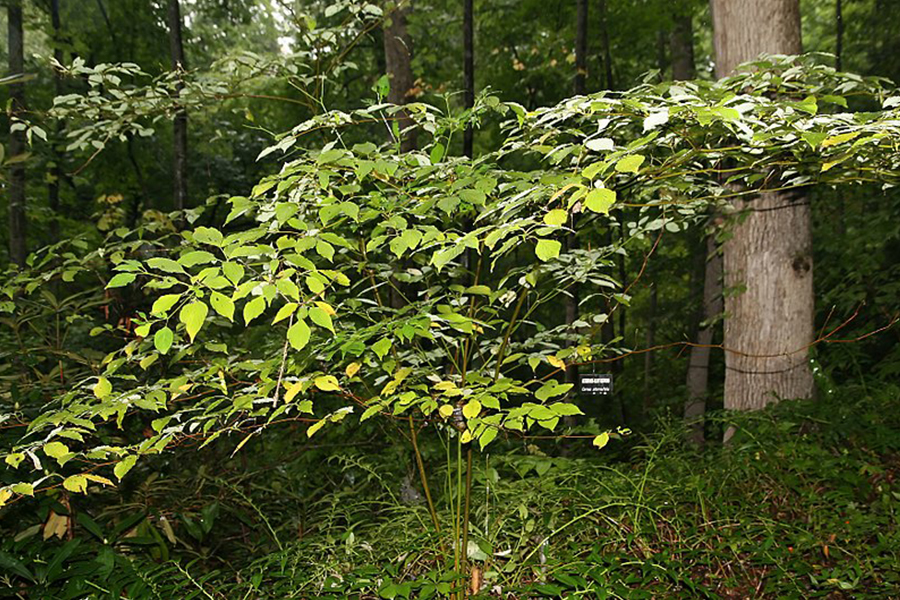Cornus alternifolia
Pagoda dogwood is a shrub native to eastern North America known for its unique tiered branching pattern said to give a pagoda-like appearance.
Location
Today, the arboretum is home to eight pagoda dogwood trees. If you start at the corner of May and Lovell Streets, and follow the East-West trail to Appleton Road trail, you should be able to find four of them. A few are near the intersection of Appleton Road and Magnolia trails, and some are along the East-West trail too.


History at Hadwen
Records show that the pagoda dogwood was planted in the arboretum by Hadwen at least as early as 1882 along with six other species of dogwood. Pagoda dogwood remained present in tree surveys from 1978 and 2020.
Keep Learning
Detailed Species Information
Pagoda dogwood is a deciduous shrub in the family Cornaceae native to eastern North America. Typically, the pagoda dogwood can grow up to 25 feet (8 meters) in height and 6 inches (15 centimeters) in trunk diameter. The branching pattern of this species is characteristically horizontal, giving it a tiered or pagoda-like appearance, hence the common name. The bark is shallowly furrowed and deep reddish brown in color. The leaves are typically green above and white on the underside. The small, white flowers emerge in May or June and the fruit which is a small, blue-black drupe ripens in the fall.
Pagoda dogwoods are typically found on the edges of wetlands or forests but are also shade tolerant and can be found in forest understories. In their natural habitat, they provide food and habitat for many birds and mammals including the black bear and white-tailed deer. The pagoda dogwood is often used in ornamental landscaping for its unique shape. Additionally, the pagoda dogwood is used in traditional Chinese medicine.
